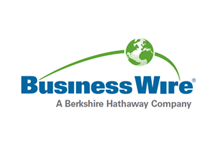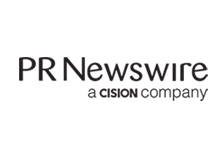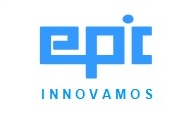The Global Microencapsulation Market to 2025: Analyzed by Technology, Application and Coating Material - A $19.35 Billion Opportunity - ResearchAndMarkets.com
The "Microencapsulation Market Size, Share & Trends Analysis Report By Technology (Emulsion, Spray), By Application (Pharmaceutical, Home & Personal Care), By Coating Material, And Segment Forecasts, 2019 - 2025" report has been added to ResearchAndMarkets.com's offering.
The global microencapsulation market size is expected to reach USD 19.35 billion by 2025, according to this report, exhibiting a CAGR of 13.7% over the forecast period. Rising demand for microencapsulated fragrances, bleach activators, and anti-bacterial compounds in the home and personal care industry is expected to propel industry growth.
Increasing penetration of the technology in the pharmaceutical application for the controlled and sustained release of drugs is likely to be a key factor for the industry expansion. In addition, use of the technology in masking odor, taste, and activities of encapsulated drug ingredients is expected to benefit expansion of the microencapsulation market over the projected period.
High initial investments for the technology development, coupled with dominance of the existing market players, are expected to be a threat for the new entrants. However, scope for innovations in the upcoming fields such as phase change materials (PCM) to incorporate them in sports equipment, building materials, and textiles is expected to drive the product demand.
Microencapsulation technique offers viable texture blending, appealing aroma release, and taste to flavors and fragrances used in the food and beverage products. Microencapsulation of flavors protects them from evaporation, oxidation, and thermal degradation, and extends the shelf-life by retaining the food flavors, which is projected to drive their demand in this application.
Further key findings from the study suggest:
- In 2018, protein-based coating materials accounted for 26.3% share of the overall revenue on account of their superior binding properties, which enable their application in flavor compounds used in the food and beverage industry
- Emulsion technology is expected to exhibit a CAGR of 13.9% from 2019 to 2025 on account of its rising demand for encapsulating essential oils to protect its flavors and fragrances in the end-use applications
- Home and personal care industry accounted for 9.2% share of the overall revenue in 2018 on account of surging demand for the technology to produce cosmetics, including perfume, soap, lotion, cream, shampoo, and washing liquids
- Pharmaceutical industry is expected to expand at a CAGR of 13.4% owing to benefits offered by the technique such as particle size reduction for enhancing the solubility of the poorly soluble drugs, sustained drug delivery and a cell encapsulation
- Europe generated revenue of USD 2.51 billion in 2018, with a majority of share derived from pharmaceutical application
- Major players operating in the microencapsulation market operate their business through strategic partnerships and tie-ups with end-user industries, wherein they offer client specific technology solutions
Key Topics Covered
Chapter 1. Methodology and Scope
1.1. Market Segmentation & Scope
1.2. Market Definition
1.3. Information Procurement
1.4. Information Analysis
1.5. Market Formulation & Data Visualization
1.6. Data Validation & Publishing
1.7. List of Data Sources
1.8. Primary Respondent Details
1.9. Primary Interview Breakup
Chapter 2. Executive Summary
2.1. Market Outlook
2.2. Segmental Outlook
2.3. Competitive Insights
2.4. Market Snapshot
Chapter 3. Market Definitions
Chapter 4. Industry Outlook
4.1. Business segment trends
4.2. Penetration & Growth Prospect Mapping
4.3. Value Chain Analysis
4.4. Raw material trends
4.5. Technology Overview
4.6. Market Variable Analysis
4.7. Market Opportunity Assessment
4.8. Business Environment Analysis Tools
4.9. Market Entry Strategies
Chapter 5. Regulatory Forces
5.1. Microencapsulation: Regulatory landscape
Chapter 6. Microencapsulation Market: Coating Materials Estimates & Trend Analysis
6.1. Definition & Scope
6.2. Microencapsulation market: Coating materials movement analysis, 2018 & 2025
6.3. Carbohydrates
6.4. Gums & resins
6.5. Lipids
6.6. Polymers
6.7. Proteins
Chapter 7. Microencapsulation Market: Technology Estimates & Trend Analysis
7.1. Definition & Scope
7.2. Microencapsulation market: Technology movement analysis, 2018 & 2025
7.3. Coating
7.4. Emulsion
7.5. Spray technologies
7.6. Dripping
7.7. Others
Chapter 8. Microencapsulation Market: Application Estimates & Trend Analysis
8.1. Definition & Scope
8.2. Microencapsulation market: Application movement analysis, 2018 & 2025
8.3. Pharmaceutical & healthcare products
8.4. Home & personal care
8.5. Food & beverages
8.6. Agrochemicals
8.7. Construction
8.8. Textiles
8.9. Others
Chapter 9. Microencapsulation Market: Regional Estimates & Trend Analysis
9.1. Regional Market Snapshot
9.2. Microencapsulation market: Regional movement analysis, 2018 & 2025
9.3. North America
9.4. Europe
9.5. Asia Pacific
9.6. Rest of World
Chapter 10. Competitive Landscape
10.1. Key Global Players & Recent Developments & Their Impact on The Industry
10.2. Strategic Initiative & Outcome Analysis
10.3. Vendor Landscape
10.4. Participant Categorization
10.5. List of Key Companies, By Region
10.6. List of Key Companies, By Application
Chapter 11. Company Profiles
11.1. Capsulae
11.2. LycoRed Group
11.3. BASF SE
11.4. Balchem
11.5. Lipo Technologies (Vantage)
11.6. Encapsys LLC
11.7. AVEKA Group
11.8. Reed Pacific Pty Ltd.
11.9. Microtek Laboratories Inc.
11.10. TasteTech Ltd.
11.11. GAT Microencapsulation GmbH
11.12. Ronald T. Dodge Co.
11.13. Evonik Industries AG
11.14. InnoBio Limited
11.15. Bayer AG
11.16. Dow Corning Corporation
11.17. The 3M Company
For more information about this report visit https://www.researchandmarkets.com/r/7c6n13
View source version on businesswire.com: https://www.businesswire.com/news/home/20190411005669/en/





